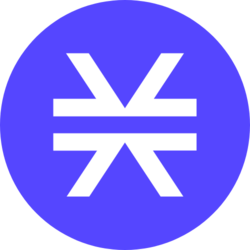

Stacks STX Price
-
1H
0.72%$0.0018
24H
2.79%$0.0068
7D
-0.16%$0.0004
30D
-22.3%$0.0715
-
Market cap $454.21 M Full cap $454.21 M Volume 24H $8.64 M ATH $3.86
Stacks Market Data
Stacks price today
About Stacks
Stacks is a layer-1 blockchain solution that is designed to bring smart contracts and decentralized applications (DApps) to Bitcoin (BTC). These smart contracts are brought to Bitcoin without changing any of the features that make it so powerful — including its security and stability.
These DApps are open and modular, meaning developers can build on top of each other’s apps to produce features that are simply not possible in a regular app. Since Stacks uses Bitcoin as a base layer, everything that happens on the network is settled on the most widely used arguably the most secure blockchain in operation – Bitcoin.
The platform is powered by the Stacks token (STX), which is used for fueling the execution of smart contracts, processing transactions and registering new digital assets on the Stacks 2.0 blockchain.
The platform was formerly known as Blockstack, but was rebranded to Stacks in Q4 2020 in order to “separate the ecosystem and open source project from Blockstack PBC” – the company that built the original protocols.
The mainnet for Stacks 2.0 launched in January 2021.
How much is 1 STX?
Trending Coins
Stacks Guides
What Is Decentralized Finance (DeFi)?
There are a lot of talks that today the traditional centralized finance system can’t satisfy all the currently existing demands. But are there any other options? In this guide, we will tell you about DeFi, its decentralized counterpart.

What Is Bloomberg Terminal and How to Use It?
Here’s a Bloomberg Terminal guide for new and existing users of the software. This tutorial gives you an insight into the features of this highly functional tool and how to access them easily, irrespective of the financial market you’re trading.
